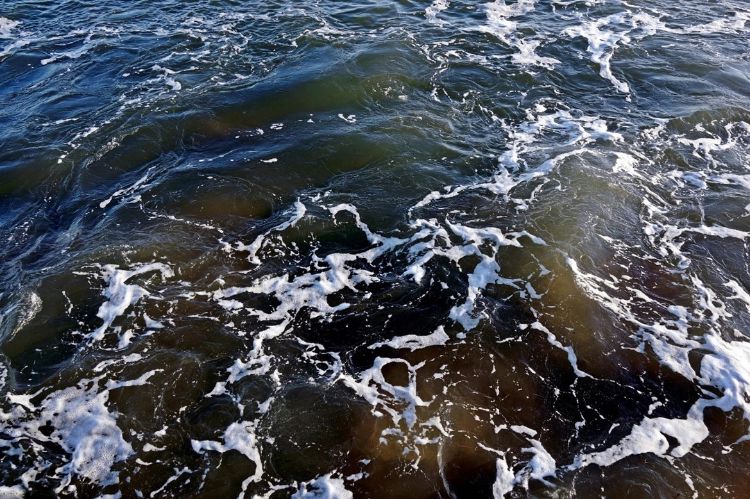Toxic foam?
How to tell if the foam on your waterway could be dangerous.

What are PFAS compounds? According to the State of Michigan, PFAS “are a large group of manmade chemicals that are resistant to heat, water and oil,” which have “been used in many industrial applications and consumer products such as carpeting, waterproof clothing, upholstery, food paper wrappings, personal care products, fire-fighting foams and metal plating.”
Because they have been used in so many products for so long, they have been found in places such as our water.
Exposure to PFAS compounds has been linked to several health risks. According to the United States Environmental Protection Agency (EPA), the health effects of PFAS exposure could include:
- Reproductive issues, including decreased fertility.
- High blood pressure in pregnant people.
- Developmental delays in children.
- Increase in the risk of some types of cancer.
- Decreased ability to fight infections.
- Hormonal interference.
- Increased cholesterol levels and/or risk of obesity.
Research into the health effects of these compounds is ongoing, and we are continuing to find out just how much our environment and more specifically our waterways are impacted by pollution like PFAS contamination. Sometimes, pollutants like PFAS compounds can form foam on the surface of many waterways. This foam could pose health risks to ourselves, our families and even our pets.
How do we tell the difference between naturally occurring foam and foam caused by pollutants such as PFAS? According to the Michigan Department of Health and Human Services (MDHHS), naturally occurring foam can be produced from the oils released by decaying plant matter and has some characteristics that can help identify it. Naturally occurring foam is usually off-white or brown in color and may have an earthy or fishy smell.
On the other hand, PFAS foam can appear bright white and has been said to appear more like shaving cream. MDHHS recommends if you get PFAS lake or river foam on your skin, rinse it off as soon as possible. They go on to say that the main concern with foam comes from swallowing it. This may mean keeping a close watch on children and pets.
To report a possible release or pollution incident, you can contact the Michigan Department of Environment, Great Lakes, and Energy (EGLE).
For answers to your safe food and water questions, call MSU Extension's Food Safety Hotline at 1-877-643-9882. For more information on food safety, visit MSU Extension's Safe Food & Water website.



 Print
Print Email
Email




